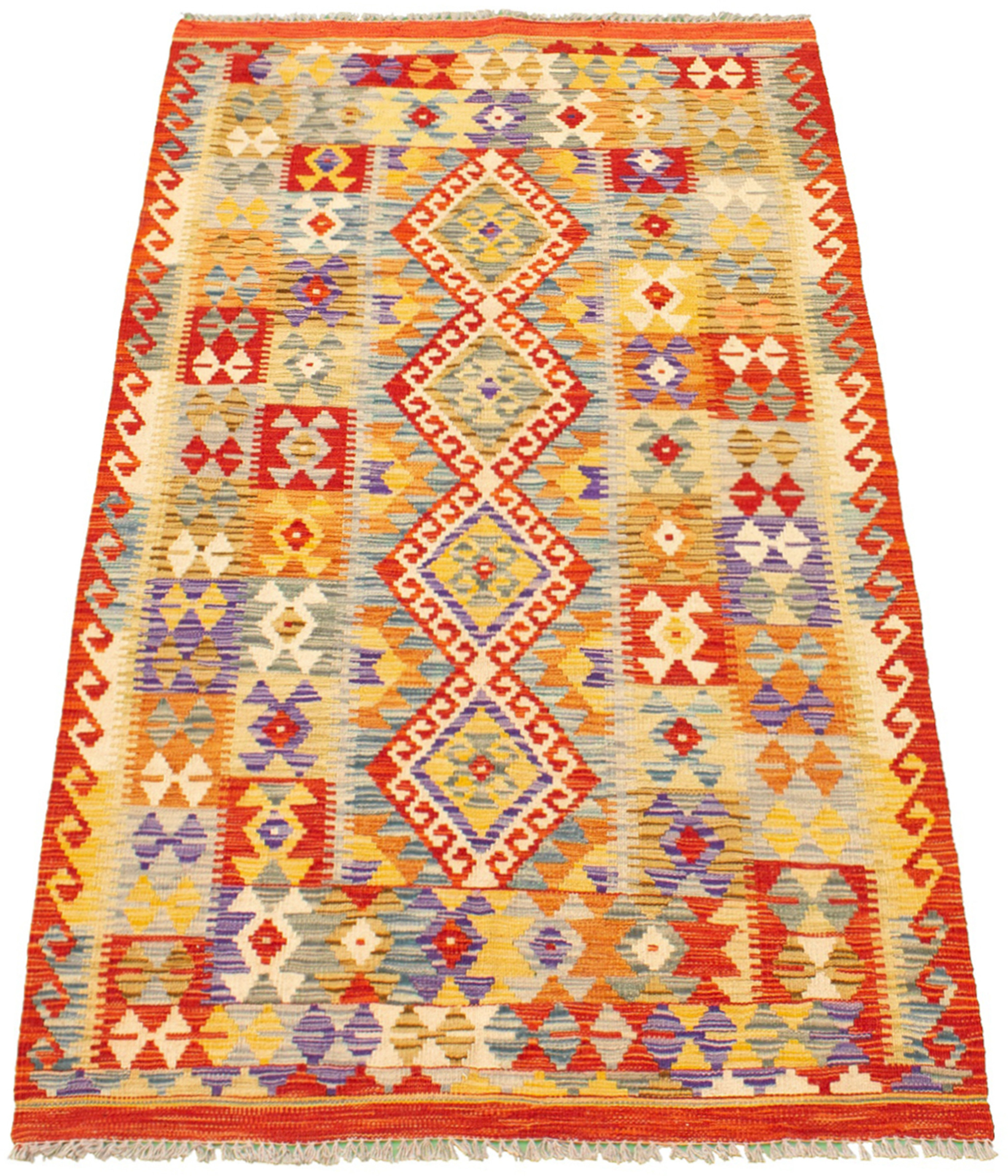Moroccan rugs or Berber rugs are woven in Morocco by different Berber tribes. So, in an actual sense, all Moroccan rugs are Berber rugs.
In the Berber culture, making rugs is second nature. Rugs are created for practicality, warmth and to tell stories of the people.
The only difference is each tribe has a unique style that oozes through the rug’s design. Local resources, the area’s climate conditions, and the native plants used for the dyes all contribute to the distinct features of the rugs.
The rugs were traditionally woven for domestic purposes and not for commercial distribution. The women solely weaved these rugs for homes to decorate the floors and or use as seating covers, blankets or bed covers during the colder months of the year.
Each rug has its own backstory which is often about the woman who creates the piece; that is why no two rugs are the same. It takes about 20 to 30 days for each rug to be hand-woven.
These are some examples of Moroccan rugs:

Photo: Atlas weavers
Beni Ourain – Middle Atlas
This type is made by the Beni Ourain tribe in the Middle Atlas. Each rug is decorated with soft black or dark brown geometric patterns and lines. The layout on each rug is often irregular and mismatched, lending to its charm. The shades usually range from cloud white to sandy cream.

Photo: Maalem rugs
Azilal – High Atlas
This design hails from the high Atlas Mountains and these rugs often have bold colors and patterns. This type is woven in wool with elaborate patterns steeped with symbolism. The base color for this type is usually cream or white (the natural color of wool used). The regional flora is then used to dye some of the wool in bright colors and woven into the single-knotted creations which are in high demand.

Photo: Etsy
Boujad – Central Plains The Boujad area is not a small tribal location and they occupy a wider area in Morocco. The rugs from this region come in warm hues like orange, pink and red.
The knots used in weaving the rugs are that of the traditional Berber weaving style but typically pulled together tighter, making weavers use less wool. This allows the weaver to make more sophisticated geometric designs that make Boujad rugs popular.

Photo: Wayfair
Kilim – All Tribes
Kilim rugs are thin which makes them portable for traveling. They are the preferred choice during warmer weather and sometimes used as carpets to cover an entire floor space in a room.
The rugs have an astonishing contrast and can be spotted in most Berber tents in the desert. The reason for its lightness is, it is woven flat and absolutely pileless.

Photo: Atelier Nomad
Beni Mguild – Middle Atlas
The Beni Mguild rugs speak to the climate of the region. The harsh far western Middle Atlas region lends to the thick, plush weave of the rugs.
These rugs come two-sided and when the weather is warmer, the flat side is used. Originally, the Beni Mguild rugs are woven on a vertical loom and come in purple, blue, red and brown hues. They are usually purchased for their versatility.

Photo: The rag Souk
Boucherouite – All Tribes
In this area, there is little to no wool, so the rugs are made from scraps of old fabrics and old clothing. This technique, though filling a need gap, is one of the practical examples of recycling.
Boucherouite rugs are primarily created out of the need for warmth. The designs end up being visually captivating, fluid and playful. The rug’s distinctive texture makes it robust, and the fabrics used make it very colorful and lovable.










